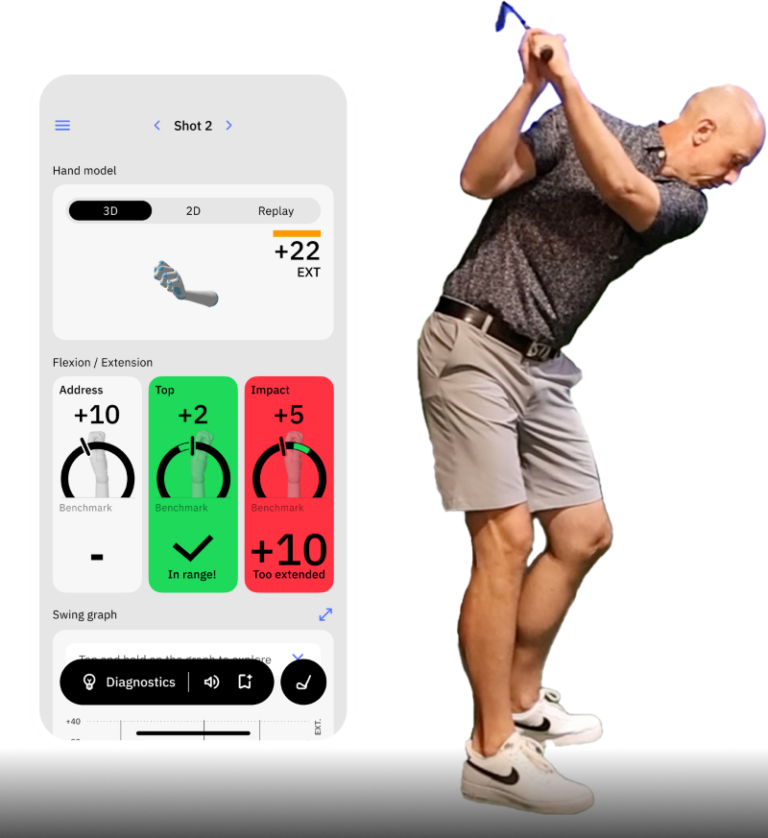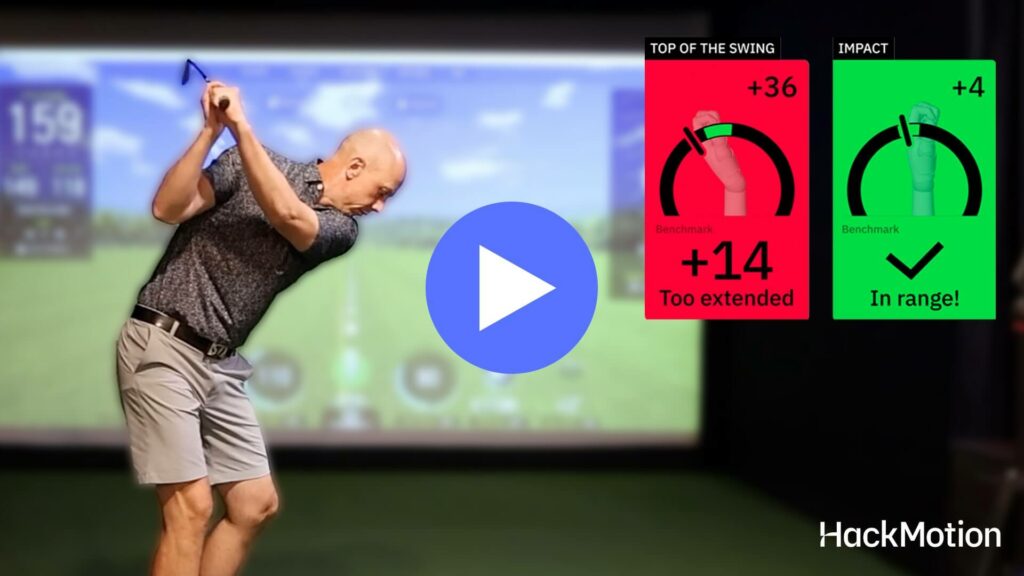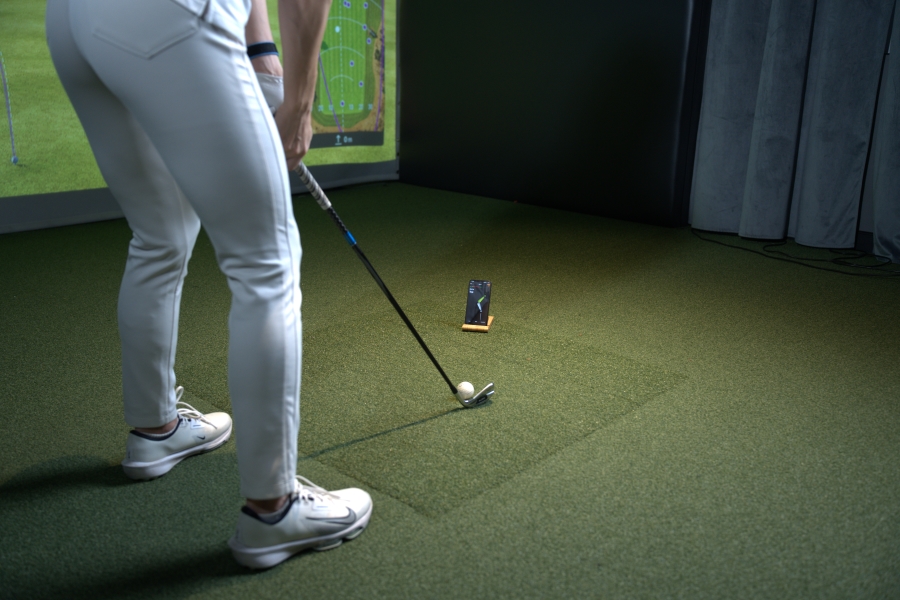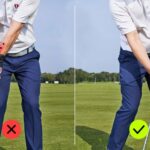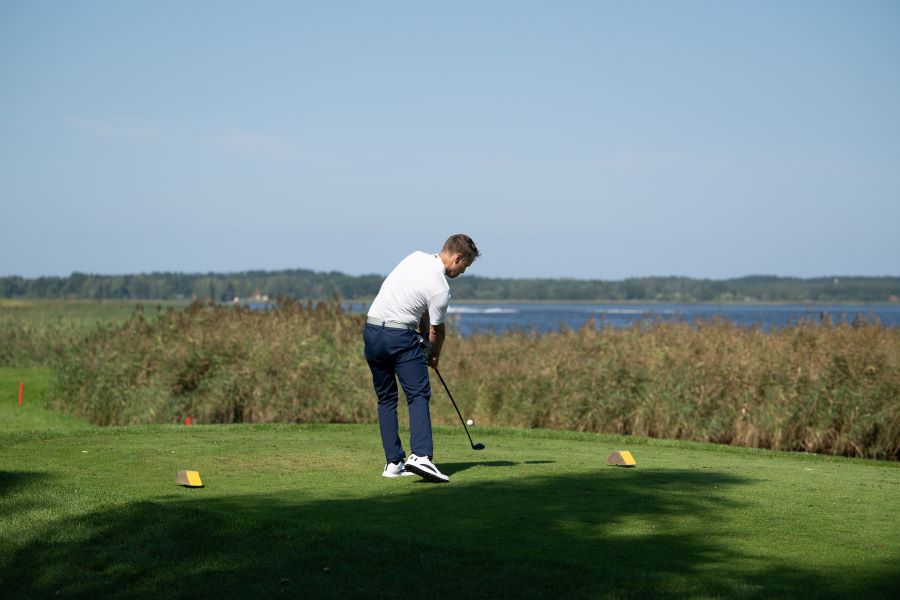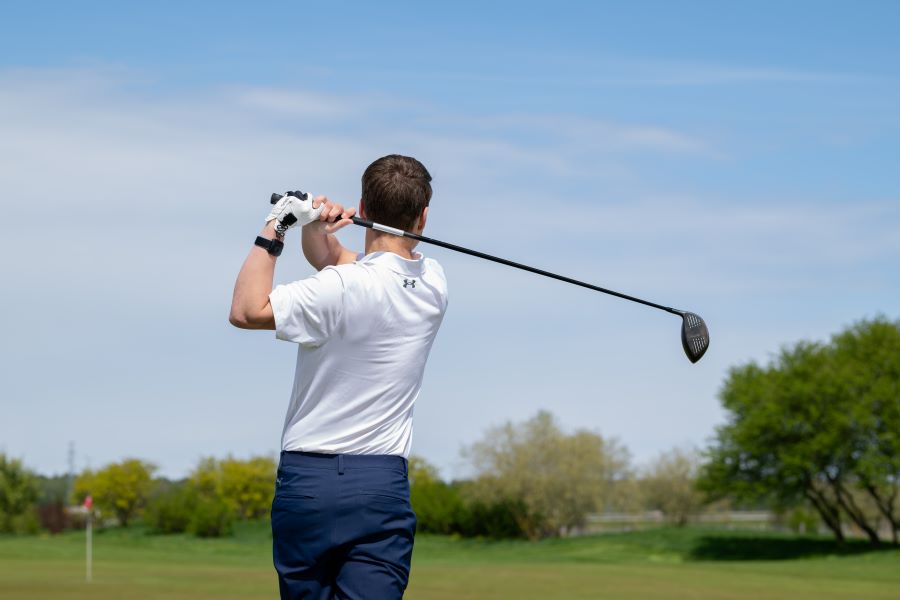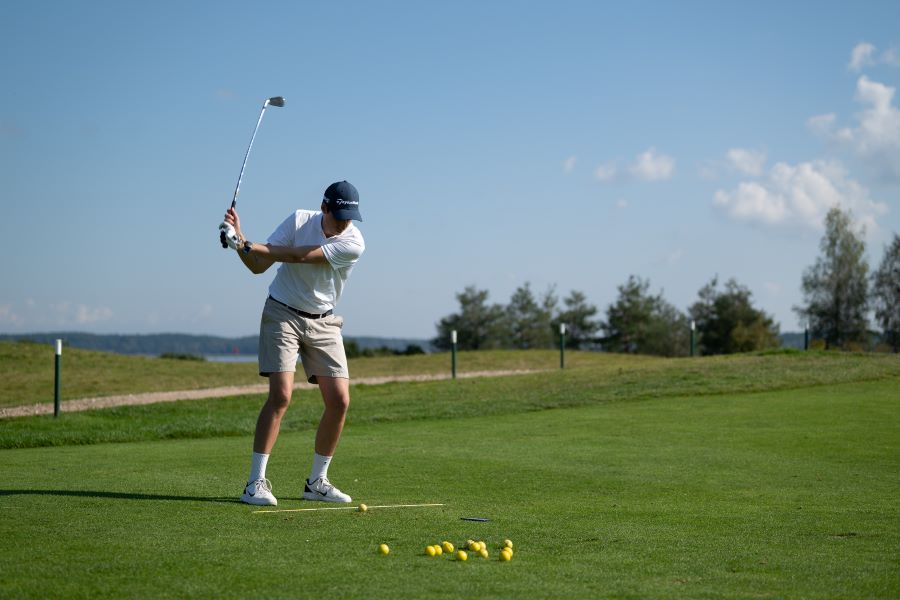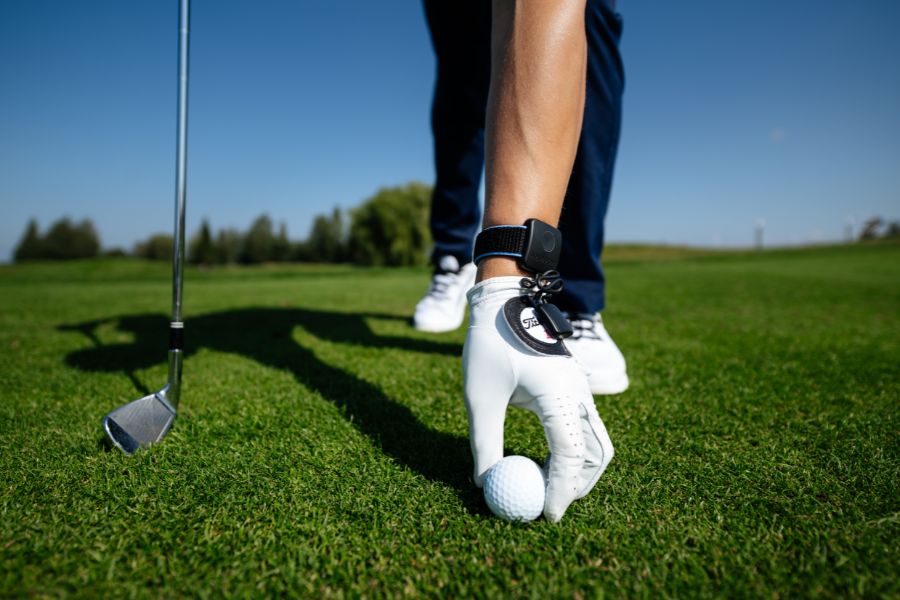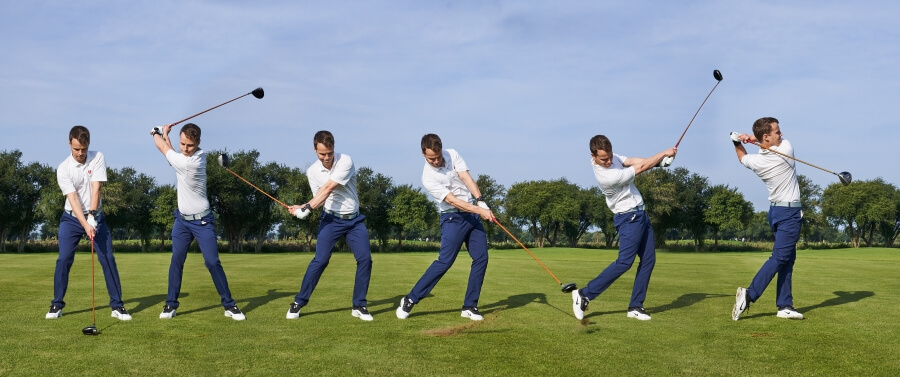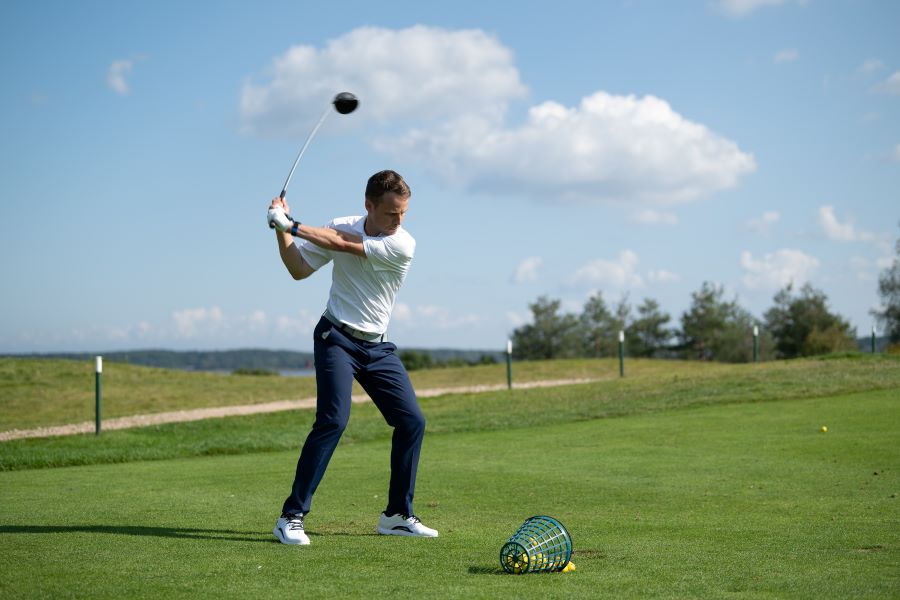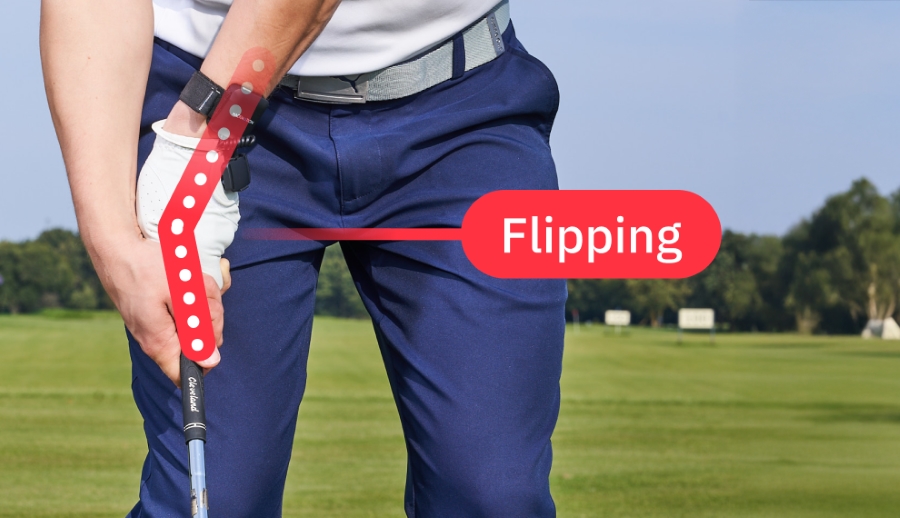Fix Over Rotation in Golf Swing: 5 Actionable Drills
There are three types of golfers: those who know how to rotate, those who exaggerate rotation, and those who don’t rotate enough.
If you’re a golfer who over-rotates, you probably feel your body opening too fast on the downswing. This action throws off your contact and leads to compensations at impact, typically with the wrists.
Your instinct to rotate is good but we have to sort through a few things to help you stop over rotating.
Here are five practical drills and some actionable tips to help you sequence your body properly, control your wrist angles and rotate without overdoing it.
Key Takeaways
If you don’t have time to read our entire article on over rotating your golf swing, here are the most important points to take with you.
- Over-rotation is usually a compensation for an open clubface, not the root issue.
- Fixing your lead wrist angle helps you rotate properly without spinning out.
- Power comes from proper sequencing, not from forcing your hips to rotate faster.
- Use drills that promote connection and tempo to train efficient, synced movement and avoid over rotating in your downswing.
Contents
Why Am I Over-rotating My Golf Swing?
Over-rotation usually isn’t the root problem. It’s a compensation you are making because of issues with your clubface.
Typically, the clubface is too open in transition often from a cupped lead wrist. Your body instinctively spins open to square the face in time. Your result is typically a rushed swing that makes solid contact very difficult.
Common Causes of Over-Rotation
- Open Clubface: Cupped (extended) lead wrist at the top forces a desperate body rotation to square the face.
- Poor Wrist Angles: Without proper wrist flexion in transition, the clubface remains open, and your body overcompensates.
- Tempo & Sequence Breakdown: When the upper body outraces the arms, timing falls apart.
- Lack of Weight Shift: Staying on the trail leg encourages spinning instead of shifting and turning.
- Trying to Force Power: Spinning the hips faster doesn’t equal more speed, just more inconsistency.
The fix isn’t “less rotation.” It’s better wrist control, improved sequencing, and smarter tempo.
5 Simple Drills to Stop Over Rotating
Each of the following drills is designed to help you sync your body and arms, control the clubface, and strike the ball more efficiently.
While you can work on these drills without the help of HackMotion, if you want data and real-time feedback, you’ll find it more effective to use HackMotion to help you improve.
We’ve included step-by-step instructions, timestamps, and YouTube links so you can implement these drills into your practice immediately.
Alignment Stick “Punch Shot” Drill
The Alignment Stick Punch Shot Drill will help eliminate excessive wrist flipping and ensure that your body doesn’t hang back during impact.
This drill will also give you some direction on how to get through impact and what your focus should be.
- Video timestamp – 6:00 – 7:30
Alignment Stick Rotation Drill – Step by Step:
- Set Up: Insert an alignment stick down the grip so it extends past your lead side, resting just off your hip.
- Start Slow: Make small punch swings without hitting the ball, keeping the stick from hitting your side.
- Add the Ball: Once the motion feels solid, begin hitting balls while maintaining stick clearance.
- Move as One: Focus on rotating your body, arms, and wrists together through impact.
- Increase Speed Gradually: Build up to faster swings while watching for over-rotation or wrist breakdown.
HackMotion Tip: Watch your lead wrist angle during impact. If you’re flipping, you’ll see excessive extension. Train for a more flexed, delofted position to match efficient body motion.
Smart Ball Arm Sync Drill
The Smart Ball Arm Sync Drill helps fix disconnected arms, flipping, and casting.
It is a great drill for golfers who have poor sequencing and feel like they never know how fast the body should rotate through impact.
There is always that feeling that faster rotation could increase power. With the Smart Ball Arm Sync Drill, you’ll learn that you can gain power through impact if your sequencing is correct.
- Video timestamp – 8:00 – 10:10
Smart Ball Arm Sync Drill – Step by Step:
- Set Up: Place a Smart Ball or inflatable ball between your forearms.
- Start Small: Make slow practice swings without a ball, keeping the Smart Ball in place.
- Add Contact: Progress to soft wedge shots, maintaining forearm connection throughout.
- Build Up: Gradually move to fuller swings as your arm-body sync improves.
- Monitor Wrist Angles: Use HackMotion to check wrist stability at the top and through impact.
- Go Ball-Free: Once the feeling is consistent, remove the Smart Ball and maintain the connection sensation during normal swings.
HackMotion Casting Drill
The HackMotion Casting Drill is located in the HackMotion app. It helps to improve any loss of lag or early release in your golf swing.
While the Casting Drill isn’t necessarily focused on over-rotation, it does help you learn the perfect rotation and the timing for your lower body to rotate through impact.
When working on the HackMotion Casting Drill, you’ll feel that your lower body must rotate first from the top of the backswing, but it can’t spin out of control.
- Video timestamp – 5:40 – 7:00
Fix Your Casting with HackMotion
Train to fix casting by generating power with your core and lower body.
HackMotion Casting Drill – Step by Step:
- Slow Rehearsals: Make a normal backswing, then begin the downswing by shifting weight left and rotating hips. Don’t pull down with your arms.
- Maintain Trail Wrist Bend: Check HackMotion data on your trail wrist. Keep it extended (bent) as you initiate the downswing.
- Arms Follow: Allow the arms to drop naturally, letting the club “lag” behind.
- Progressive Speed: Start slowly, building up speed while retaining your wrist angles.
HackMotion Tip: If your trail wrist extension straightens too soon, you’re casting. Keep the extension longer to store power.
Combined Top Drill
This one trains a solid flexed wrist angle at your regular backswing speed. The goal for the Combined Top Drill is to have a square face at the top of your backswing.
When the face is square at the top you can focus on a powerful and correctly timed body rotation. You’ll no longer have to feel like rushing or stalling is necessary just to square the clubface.
Combined Top Drill in HackMotion
Train your top position by mastering optimal wrist angles. Challenge yourself to reach the ideal wrist position during a full-speed backswing.
Combined Top Drill – Step by Step:
- Full-Speed Backswing: Address the ball normally with HackMotion on. Make a rapid backswing, just like you would on a real shot with no deliberate pause.
- Check Wrist Angles at the Top: The moment you reach the top, note whether you’ve achieved the desired (lower extension) lead wrist reading in HackMotion’s green zone. If you have time, pause briefly to confirm your wrist position.
- Transition and Swing Through: From that top position, flow smoothly into your downswing. The goal is to blend a stable, square wrist angle from the top into your normal delivery.
- Refine with “False Starts”: If the top-of-swing numbers still show extension, do a few reps where you swing quickly to the top, pause for just an instant, and then come down. Over time, reduce the pause until you can maintain the correct wrist position in a continuous, full-speed backswing.
Hit Hard, Stop Quick
The Hit Hard Stop Quick drill is kind of an extension of the first drill we worked on the Alignment Stick Punch Shot Drill.
Once you have that feeling down of working on the forward shaft lean, flat lead wrist and more connected impact try this drill.
One of the best things about the Hit Hard Stop Quick drill is that it does most of the work for you.
All you need to work on is stopping the club just after impact, and the rest will work itself out – including over rotation in your downswing.
- Video timestamp – 12:00 – 15:00
Hit Hard, Stop Quick Drill – Step by Step:
- Start Small: Make slow swings and hit the ball, focusing on “stopping” the club immediately after impact.
- Short Follow-Through: Keep the follow-through as short as possible to prevent over-rotation.
- Build Gradually: Progress to fuller, faster swings while still stopping the club quickly after impact.
- Feel the Club Release: Focus on throwing the speed into the clubhead right at the bottom of the swing.
- Avoid Long Finishes: No big, flailing follow-throughs—stop as abruptly as your balance allows.
Final Thoughts
If you’re over-rotating, you’re likely doing it to try and save the impact position and make better contact. The problem is you’re out of sequence.
By learning to control the clubface with your wrists and sync your rotation with better body movement, you can unlock cleaner contact, straighter shots, and more consistent results.
The better your wrists, the smarter your body will move and the more efficient your rotation will become.
